Scientific name Amblyospiza albifrons Higher classification Amblyospiza Order Passerine | Phylum Chordata Rank Species | |
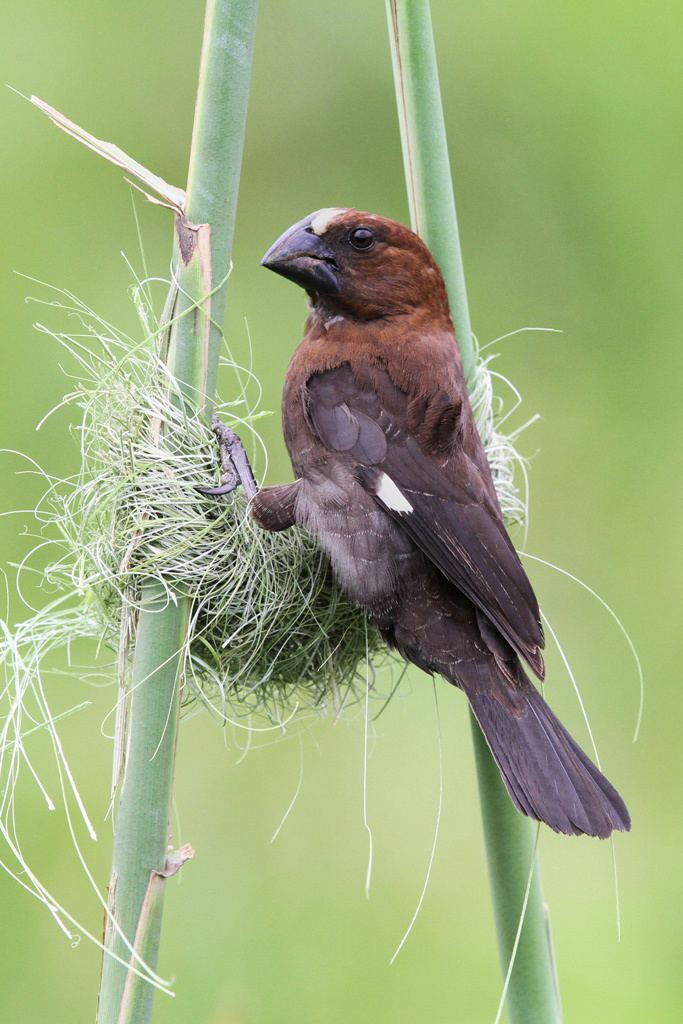 | ||
Genus AmblyospizaSundevall, 1850 Similar Spectacled weaver, Red‑collared widowbird, Lesser masked weaver, Bubalornis, Red‑headed weaver | ||
Thick billed weaver close up
The thick-billed weaver or grosbeak weaver (Amblyospiza albifrons) is a distinctive and bold species of weaver bird that is native to the Afrotropics. It is monotypic within the genus Amblyospiza. They have particularly strong mandibles, which are employed to extricate the seeds in nutlets and drupes, and their songs are comparatively unmusical and harsh. Their colonial nests are readily distinguishable from those of other weavers, due to their form and placement, and the fine strands used in their construction.
Contents
- Thick billed weaver close up
- Thick billed weaver male building nest
- Range
- Habitat
- Biology
- Subspecies
- Naming
- References
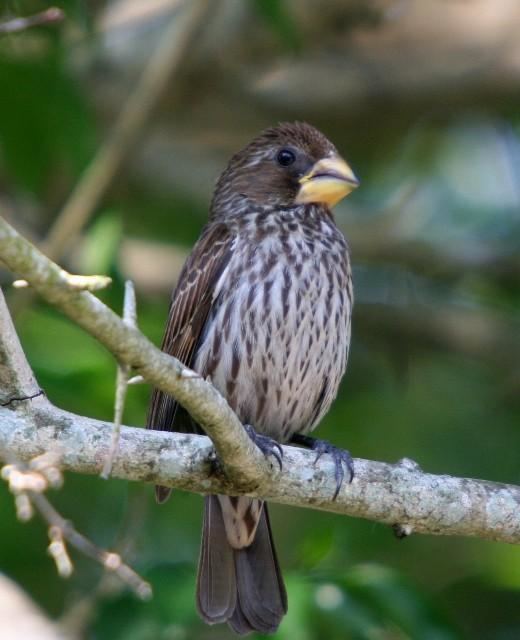
Thick billed weaver male building nest
Range
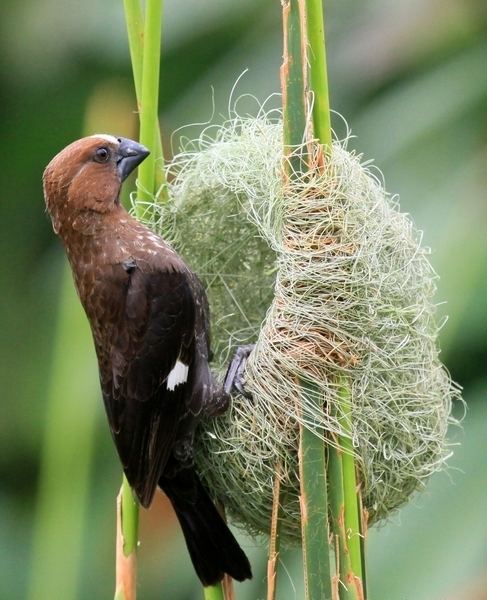
It has a patchy distribution in West, East and southern Africa, where it is present in marshes, uplands, suburban areas and artificial wetlands.

It is found in Angola, Benin, Botswana, Burundi, Cameroon, CAR, Republic of the Congo, DRC, Ivory Coast, Equatorial Guinea, Ethiopia, Gabon, Ghana, Guinea, Kenya, Liberia, Malawi, Mozambique, Namibia, Nigeria, Rwanda, Senegal, Sierra Leone, Somalia, South Africa, South Sudan, Swaziland, Tanzania, Togo, Uganda, Zambia, and Zimbabwe.
Habitat
Thick-billed weavers breed in reedy wetlands and can be found around forest edge outside the breeding season.
Biology
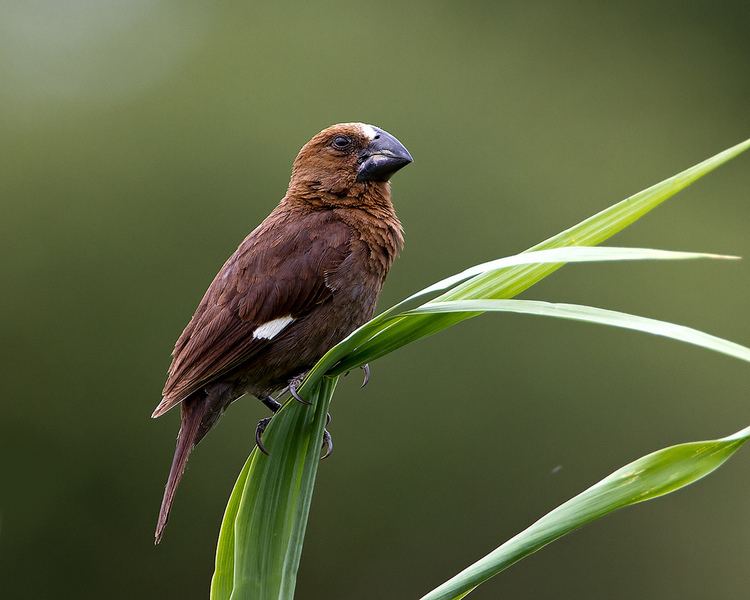
The thick-billed constructs a distinctive nest which is compact, woven with thin strips of reeds and hung between the upright stems of reeds. It is a globe-shaped nest in which the entrance is placed to the side near the top of the nest. The male weaves the nest with fine material and this makes the nest look neat, but actually the weave is very is not as complex or feveoped as other weaver species. At first the entrance is large, but when a female chooses the nest the entrance reduced to a narrow opening. Thick-billed weaver colonies may involve a single male, or may contain several several males, and is usually established in a reed swamp.
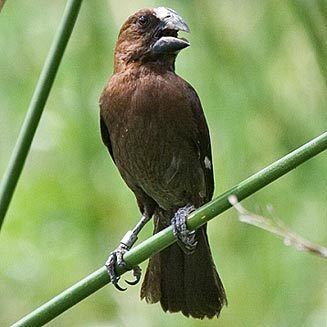
Thick-billed weavers are polygynous, in that a single male attempts to attract and mate with several females. up to six, and three nest may ne active in any male's territory at once. Where they are found at low density there are many apparently monogamous pairs, although they normally nest in small colonies; more than 100 nests in one South African colony. After mating the female normally will lay a clutch of 3 whitish pink eggs, spotted with red, purple and brown. The incubation of the eggs is carried out solely by the female, lasting 14–16 days and the chicks are fed by regurgitation by the female until fledging, although occasionally the male also feeds the young. The chicks fledge after about 18–20 days in the nest. The nests are vulnerable to predation and recorded nest predators include the white-browed coucal Centropus superciliosus, house crow Corvus splendens and the Nile monitor Varanus niloticus. After the nests have been used by the wevaers they may be commandeered by climbing mice, or used for breeding by the zebra waxbill Amandava subflava or brown firefinch Lagonosticta nitidula.
Subspecies
There are five accepted subspecies:
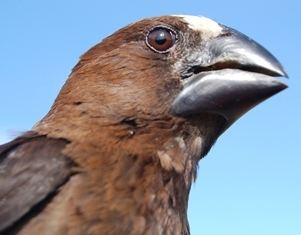
Naming
The generic name Amblyospiza means "blunt, finch", referencing the very large bill,while albifrons refers white forehead of the males. The thick-billed weaver was formally described in 1831 by the Irish zoologist and politician Nicholas Aylward Vigors from the collection of Henry Ellis, the specimens of which were attributed to Algoa Bay and environs in the Eastern Cape.
